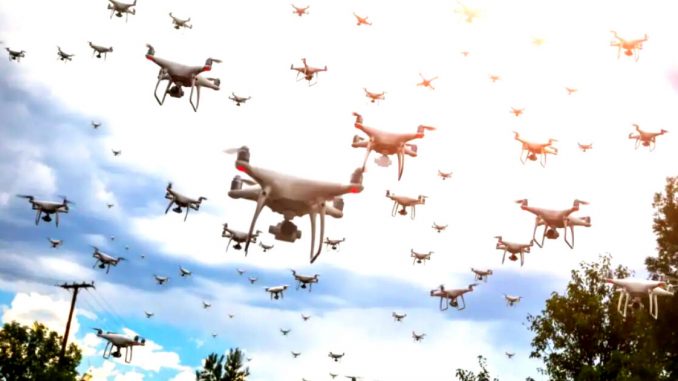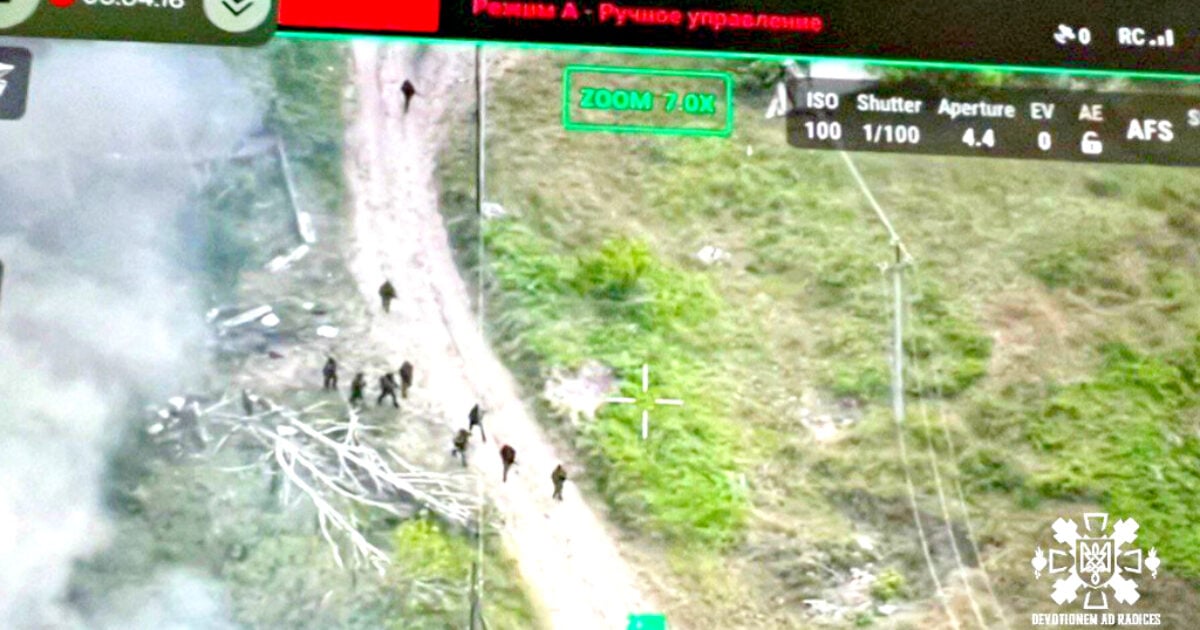
Drone swarm: criminals are starting to employ this cheap and deadly FPV weapons.
Published October 15, 2025
A shocking new report has surfaced claiming that Mexican and Colombian drug cartels are now sending their members to Ukraine — not to fight in the war, but to learn how to operate and weaponize military drones. The report, first published by The Telegraph and later echoed by Intelligence Online, suggests that these criminal organizations are taking advantage of Ukraine’s open recruitment for foreign fighters to infiltrate training programs and acquire the same battlefield drone skills used in the ongoing conflict with Russia.
According to the report, one of the training hubs mentioned is the so-called “Kill House Academy” — a Ukrainian drone warfare school that has gained a reputation as a “Top Gun” for FPV (First-Person View) drone pilots. Here, recruits learn how to build, control, and deploy inexpensive but highly effective kamikaze-style drones, capable of striking moving targets or delivering small explosives with deadly precision.
Sources cited in the investigation claim that cartel-linked individuals are being sent under false identities, often posing as foreign volunteers or ex-soldiers. In one alleged case, a Mexican operative known by the call sign “Águila 7” — or Eagle 7 — reportedly trained in Ukraine after previously serving in Mexico’s special forces. Intelligence officials believe he was actually connected to the notorious Los Zetas cartel, sent abroad to master new drone warfare techniques that could be used back home for cartel operations.
Mexican intelligence agencies reportedly alerted Ukrainian authorities in July about the infiltration of cartel-linked trainees within certain international brigades. However, given the chaos of war and the large number of foreign volunteers, it remains unclear whether Ukraine has the means to effectively screen or expel these individuals.
The development has alarmed law enforcement and intelligence communities across the Americas. Experts warn that the skills being learned on the Ukrainian battlefield — including remote targeting, aerial surveillance, and improvised munitions deployment — could dramatically enhance the cartels’ operational capabilities once these trainees return home.
For years, Latin American cartels have been experimenting with small commercial drones for surveillance and smuggling. But reports indicate a sharp escalation in recent years: from sporadic drone bombings in 2020 to over 40 documented attacks per month by 2023 in Mexico alone. These drones have been used to strike police convoys, rival cartel camps, and even government buildings.
Now, with access to Ukrainian-style drone warfare training, these same cartels could be poised to unleash far more sophisticated attacks — using cheaper, faster, and harder-to-detect drones equipped with explosives or cameras. Analysts warn this could transform cartel conflicts into something resembling modern low-intensity warfare, where organized crime groups possess technology rivaling that of small militaries.
Security analysts have also raised concerns about how this training might be monetized. Cartels are notorious for selling their knowledge and equipment to other criminal networks. If Mexican or Colombian operatives return home with combat-proven drone expertise, they could easily train other gangs or paramilitary groups, spreading these tactics throughout the Western Hemisphere.
 Implications
Implications
1. Escalation of the Drug War
If cartels are truly learning combat-level drone warfare, the balance of power in Latin America could change drastically.
-
Drones could be used for precision strikes against rival groups or law enforcement.
-
Police and military would face airborne threats they are not well equipped to counter.
-
Violence could become more asymmetric, with criminals deploying battlefield-style tactics.
2. Threat to U.S. Border Security
Once drone warfare knowledge spreads, the U.S.–Mexico border could see:
-
Smuggling drones that evade detection and deliver high-value contraband or explosives.
-
Cross-border attacks targeting U.S. border agents or infrastructure.
-
Increased surveillance difficulty, as drones could operate from Mexican territory with minimal human presence.
3. Global Spread of Military Drone Tactics
Ukraine has become a testing ground for cheap but deadly FPV drones. If cartel members gain that knowledge, it might spread far beyond Latin America:
-
Criminal networks worldwide could mimic the strategy, using small drones for warfare, assassination, or intimidation.
-
The cost barrier to high-tech violence becomes almost nonexistent — anyone with $400 and training could replicate tactics used in active war zones.
4. Strain on International Cooperation
This issue could create diplomatic friction among nations:
-
The U.S. may pressure Ukraine to vet foreign trainees more carefully.
-
Mexico and Colombia may face criticism for not controlling cartel infiltration abroad.
-
Cooperation among intelligence agencies would need to increase to track operatives trained in conflict zones.
5. Emergence of Cartel “Mini-Air Forces”
With FPV and kamikaze drones, cartels could build small, mobile air units capable of:
-
Hitting police convoys or rival hideouts from a distance.
-
Conducting surveillance over territory before ambushes.
-
Recording and broadcasting attacks to instill fear and dominance — a form of psychological warfare.
6. Technology Arms Race in Organized Crime
As cartels adopt drones, governments may be forced into an arms race for counter-drone technologies:
-
Electronic jamming, anti-drone nets, and portable radar systems could become standard for anti-narcotics forces.
-
Law enforcement costs would skyrocket, draining already limited resources.
7. Potential Blowback on Ukraine
If these reports prove true, Ukraine could face scrutiny and sanctions risks for inadvertently training cartel members.
-
Western allies might demand stricter vetting of foreign fighters.
-
Russia could exploit the story for propaganda, portraying Ukraine as a “training ground for global criminals.”
 Attack drones are inexpensive and very powerful weapons, ready to be used against rival cartels and US law enforcement.
Attack drones are inexpensive and very powerful weapons, ready to be used against rival cartels and US law enforcement.
 Russian surveillance drone follows Ukrainian troops retreating.
Russian surveillance drone follows Ukrainian troops retreating.
 Overall Takeaway:
Overall Takeaway:
If this report proves accurate, it exposes how global instability and weak border enforcement are creating a new generation of militarized cartels. What was once a regional drug problem could soon evolve into a full-blown security crisis spanning the Americas.
The idea that cartel operatives can travel to a war zone like Ukraine, train with military-grade drones, and return home better equipped to fight law enforcement shows how dangerously porous the system has become — from lax foreign vetting to the U.S. border itself.
Washington has poured billions into foreign conflicts, yet America’s own doorstep is becoming a testing ground for modern warfare technology. If cartels can deploy drones for assassination, smuggling, or terror, the results could be catastrophic — not only for Mexico but for U.S. border towns and national security.
This isn’t just a law enforcement issue; it’s a national defense problem. The U.S. must tighten intelligence sharing, pressure allied nations to screen foreign fighters, and invest in counter-drone defenses immediately. Otherwise, the same battlefield tactics born in Eastern Europe could soon be flying over American soil.
SOURCES: THE GATEWAY PUNDIT – Mexican and Colombian Cartels Sending Members to Ukraine To Learn To Operate Attack Drones, Changing Drug War Tactics Forever





Be the first to comment